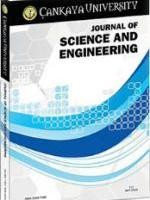Adapting Internet of Things and Neural Network in Modelling Demand Side Energy Consumption and Management
Adapting Internet of Things and Neural Network in Modelling Demand Side Energy Consumption and Management
Electrical Energy Machine Learning, MATLAB, Sensor Node, DAC,
___
- [1] E. Matallanas, M. Cagigail and A. Gutierrez, “Neural network controller for Active Demand-Side Management with PV energy in the residential sector,” Elsevier (Applied Energy), pp. 90-97, 2012.
- [2] F.W. Yu, W.T. Ho, “Load allocation improvement for the chiller system in an institutional building using logistic regression,” Honk kong. Energy and Building, 201, pp. 10-18, 2019.
- [3] M.Singha, “Load Forcasting Using Artificial Neural Network,” M.S. Thesis, Thapar Institute of Engineering and Technology, Punjab, India, 2018.
- [4] A. D. Papalexopoulous, H. Shangyouand P, Tie-Mao, “An Implementation of a Neural Network Based Load Forecasting Model from the EMS,” IEEE Transaction on Power Systems, 9, pp. 1956-1962, 1994.
- [5] C.N, Lu, H.T, Wu and A. Vemuri, “Neural Network Based Short Term Load Forecasting,” IEEE Transactions on Power System, vol. 8, pp. 336-342, 1993.
- [6] L.S.Arthur, “Some Studies in Machine Learning Using the Game Checkers,” IBM Journal of Research and Development, 1959.
- [7] R. Jose, H. Noriega and Wang, “A Direct Adaptive Neural-Network Control for Unknown Nonlinear Systems and Its Application,” IEEE Transaction on Neural Networks, 9, pp. 27-34, 1998.
- [8] S.A.Kalogirou, “Artificial Neural Networks in Renewable Energy Systems Applications,” Renewable and Sustainable Energy Reviews, vol. 5, pp. 373-401, 2001.
- [9] M. Alexandra, P. Marko, M. Porcius, C. Fortuna, and D. Mladenic, “Using Machine Learning on Sensor Data,” Journal of Computing and Information Technology, vol. 18, no. 4, 2010.
- [10] T. Go, T. Moe, G. Hirotsugu, and N. Yuuichi, “Machine Learning Applied to Sensor Data Analysis,” Yokogawa Technical Report, vol. 59, no. 1, pp. 27-30, 2016.
- [11] T. Mitchell, Machine Learning, Louisiana : McGraw Hill, 1997.
- [12] C.K. Das, M. Sanaullah, H.M.G Sarower and M.M. Hassan, “Development of a Cell Phone Based Remote Control System: An Effective Switching System for Controlling Home and Office Appliances,” International Journal of Electrical and Computer Sciences, vol. 9, 2009.
- [13] A.Z, Alkar and U. Buhur, “An Internet Based Wireless Home Automation System for Multifunctional Devices,” IEEE Transactions on Consumer Electronics, vol. 51, pp. 1169-1174, 2005.
- [14] G. Song, F. Ding, W. Zhang and A.Song, “A Wireless Power Outlet System for Smart Homes,” IEEE Transactions on Consumer Electronics, vol. 54, pp. 1688-1691, 2008.
- [15] C. Chen, S. Duan, T. Cai, B. Liu and G. Hu, “Smart Energy Management System for Optimal Microgrid Economic Operation,” IET Renewable Power Generation, vol. 5, 2010.
- [16] T. Hiyama and K. Kitabayashi, “Neural Network Based Estimation of Maximum Power Generation from PV Module using Enviromental Information,” IEEE Transaction on Energy Conversion, vol. 12, pp. 241-247, 1997.
- [17] H. Kim, Y. Ko and K.H. Jung, “Artificial Neural Network Based Feeder Reconfiguration for Loss Reduction in Distribution Systems,” IEEE Transactions on Power Delivery, vol. 8, pp. 1356-1366, 1993.
- [18] K.J. Anil, M. Jianchang, and K.M., Mohiuddin., “Artificial Neural Networks: A Tutorial,” ACM Digital Library, vol 29 (3), pp. 31 – 44, 1996.
- Yayın Aralığı: Yılda 2 Sayı
- Başlangıç: 2009
- Yayıncı: Çankaya Üniversitesi
Daniel ABODE, Omowumi OLASUNKANMİ, Waliu O. APENA, Samson A. OYETUNJI
A Comparative Performance Analysis of HLLC and AUSM+-up Riemann Solvers
High Performance Low Latency Parallel Successive Cancelation Decoder Structures for Polar Codes
Abdelkareim ALRTAİMİ, Orhan GAZİ
Optimized Three-step Hybrid Block Method for Stiff Problems in Ordinary Differential Equations
Muideen OGUNNİRAN, Yahaya HARUNA, Rapheal ADENİYİ, Morufu Oyedunsi OLAYİWOLA
Convergence of the Associated Filters via Set-Operators
Takashi NOİRİ, Sk SELIM, Shyamapada MODAK
Discussion on Some Common Properties of Hilbert Space and Topological Space
